| |
The Hepatitis C Care Cascade During the Direct-Acting
Antiviral Era Within a US Health Claims Database
|
| |
| |
DDW May 21 2022
Nicole Ferrante, MD
Gastroenterology Fellow
University of Pennsylvania
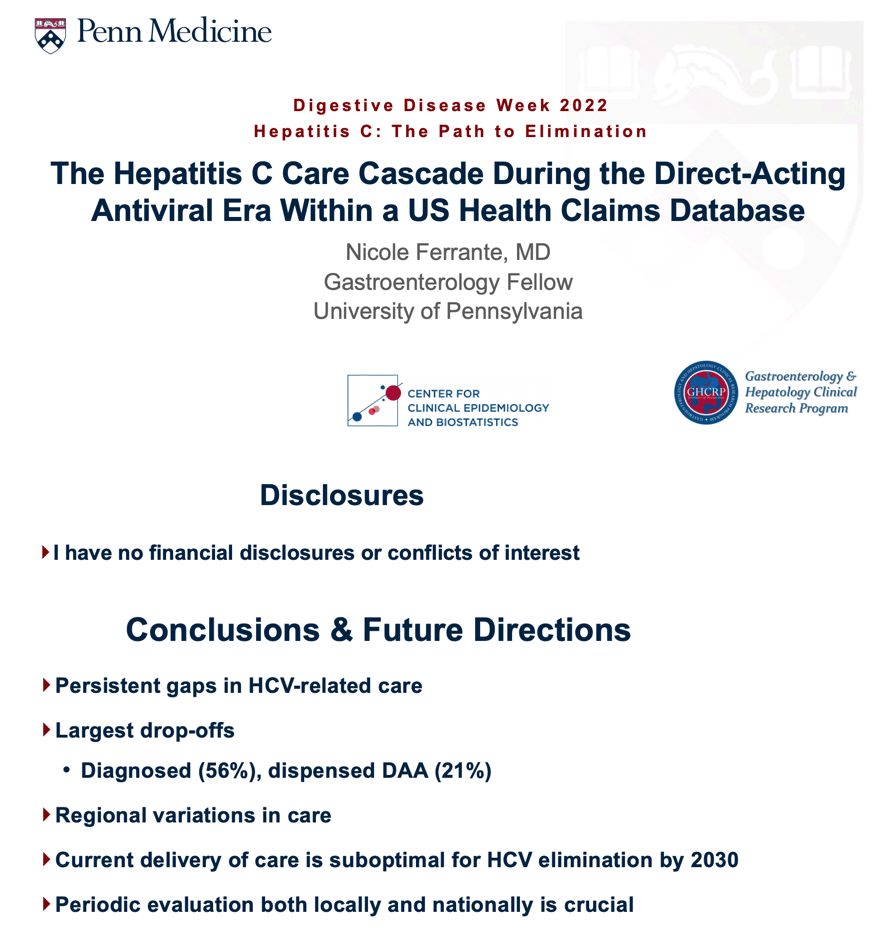
Moving forward, it will be crucial to periodically evaluate the care cascade both locally and nationally
-It's also likely that COVID had impacted the hep C care cascade and future studies should evaluate and compare care cascades over time
Since 2018, the USPSTF and CDC have recommended 1 time hep C screening in all individuals and DAA access had slowly improved
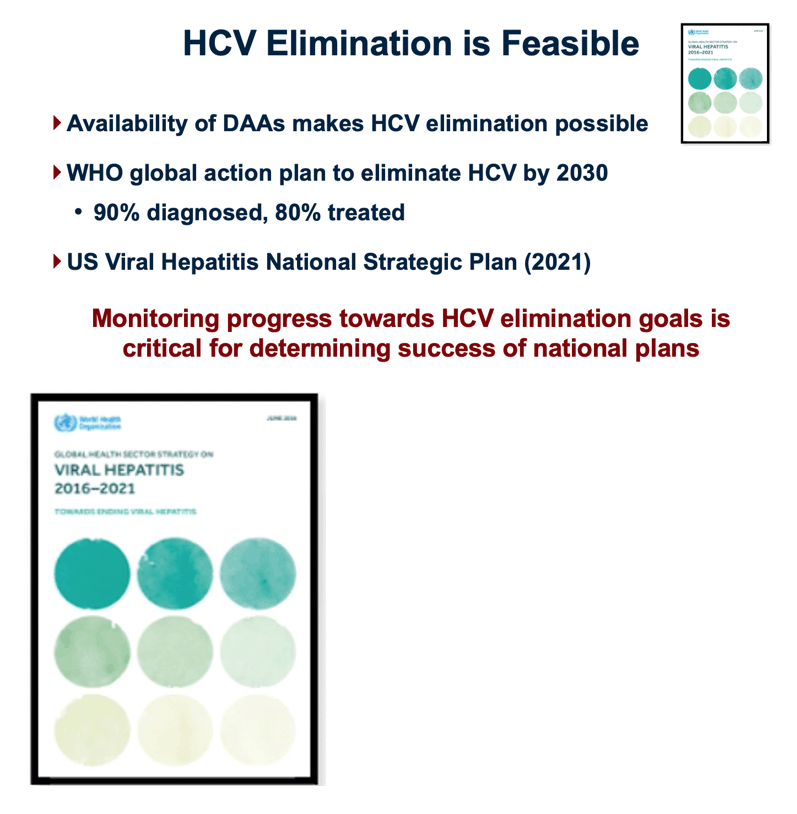
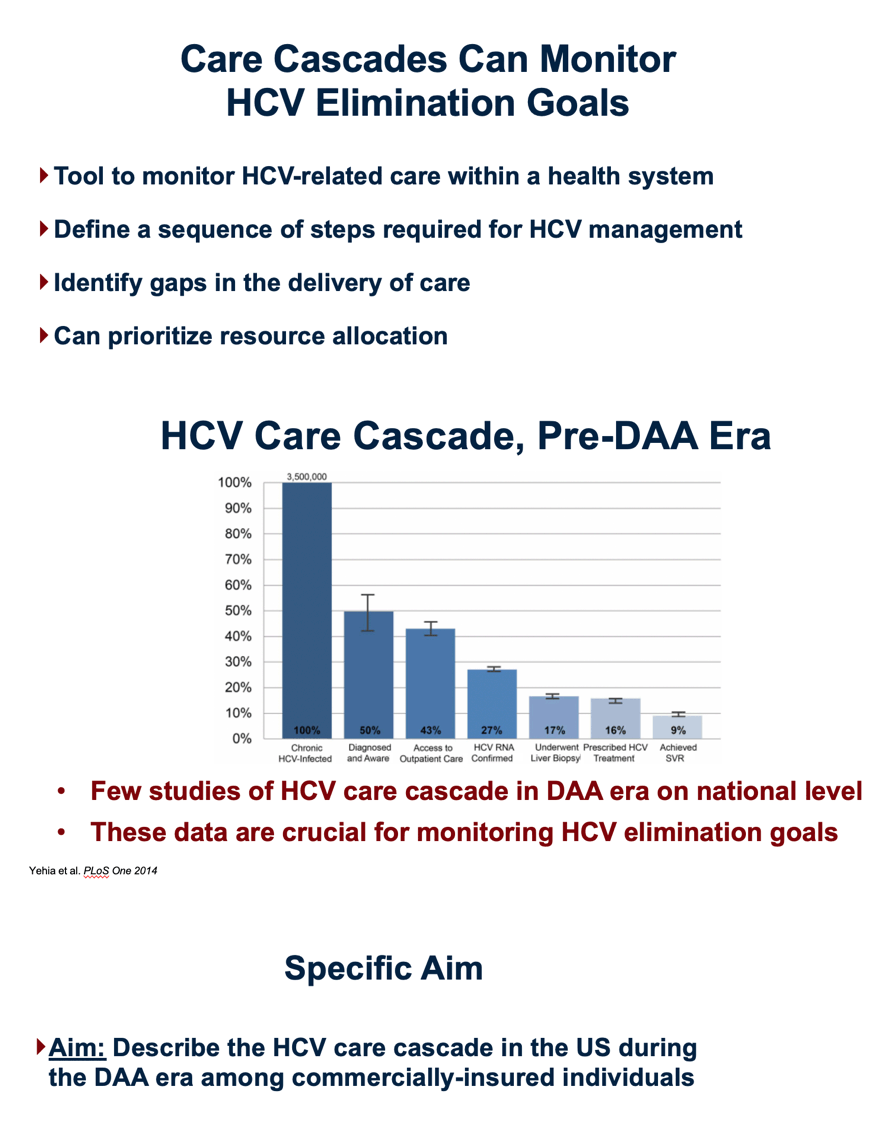
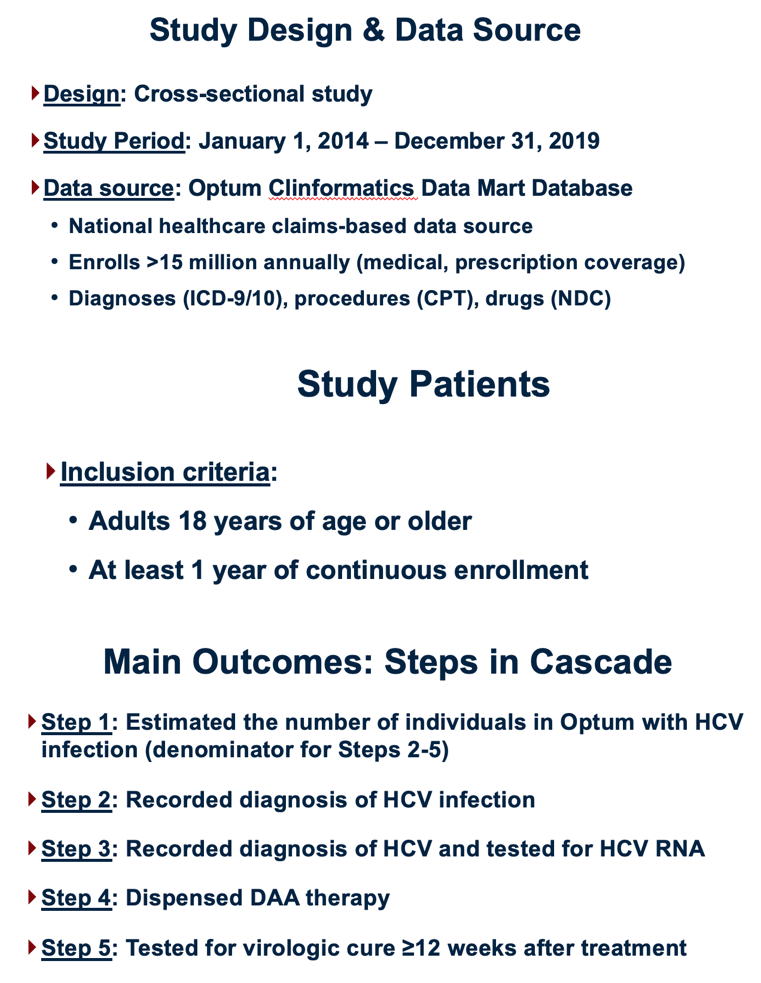
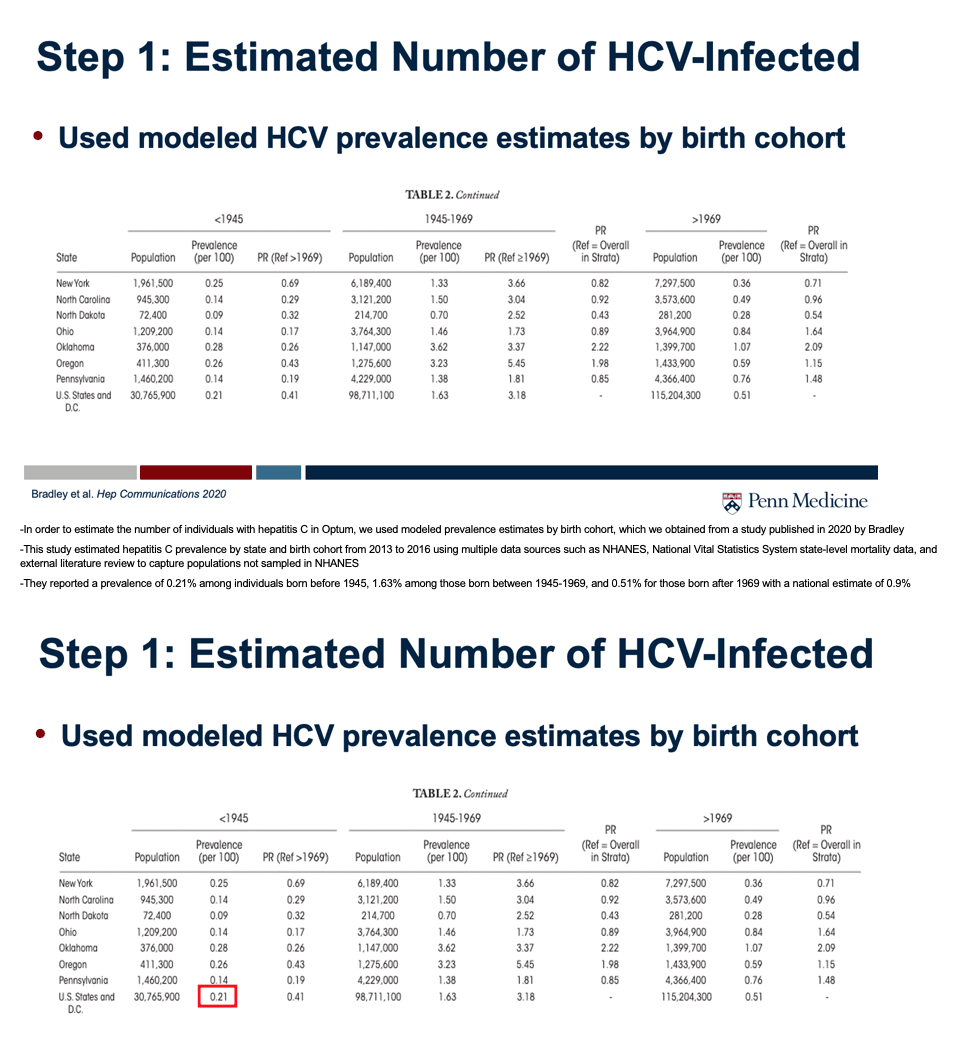
-In order to estimate the number of individuals with hepatitis C in Optum, we used modeled prevalence estimates by birth cohort, which we obtained from a study published in 2020 by Bradley
-This study estimated hepatitis C prevalence by state and birth cohort from 2013 to 2016 using multiple data sources such as NHANES, National Vital Statistics System state-level mortality data, and external literature review to capture populations not sampled in NHANES
-They reported a prevalence of 0.21% among individuals born before 1945, 1.63% among those born between 1945-1969, and 0.51% for those born after 1969 with a national estimate of 0.9%
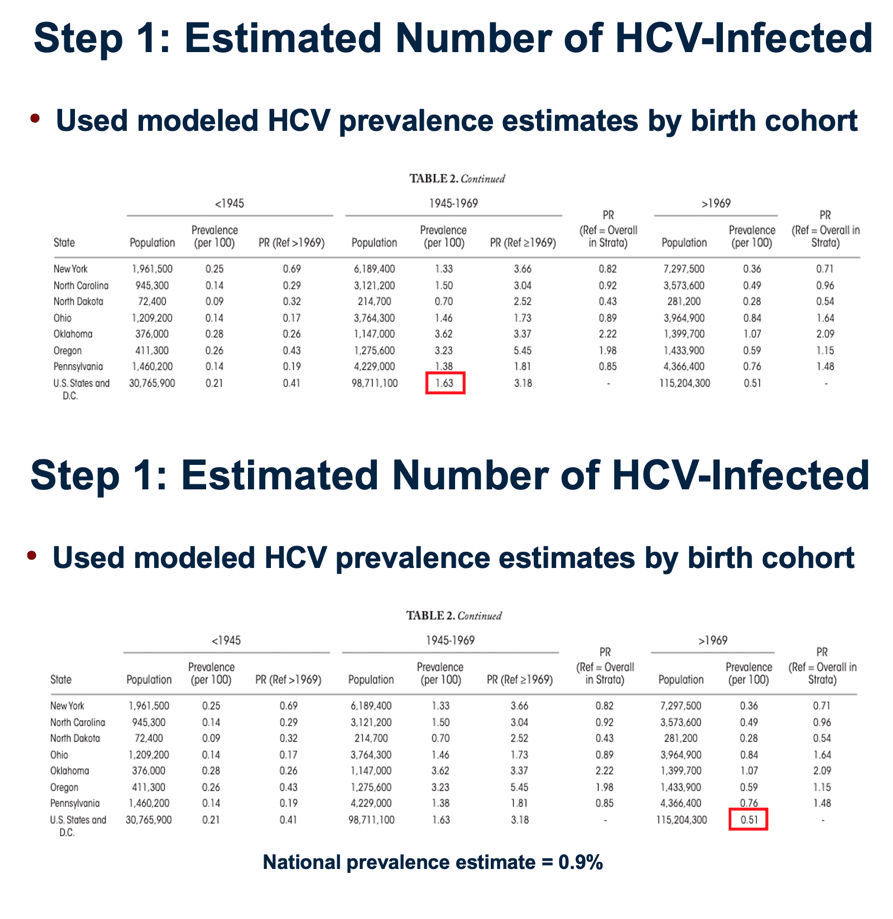
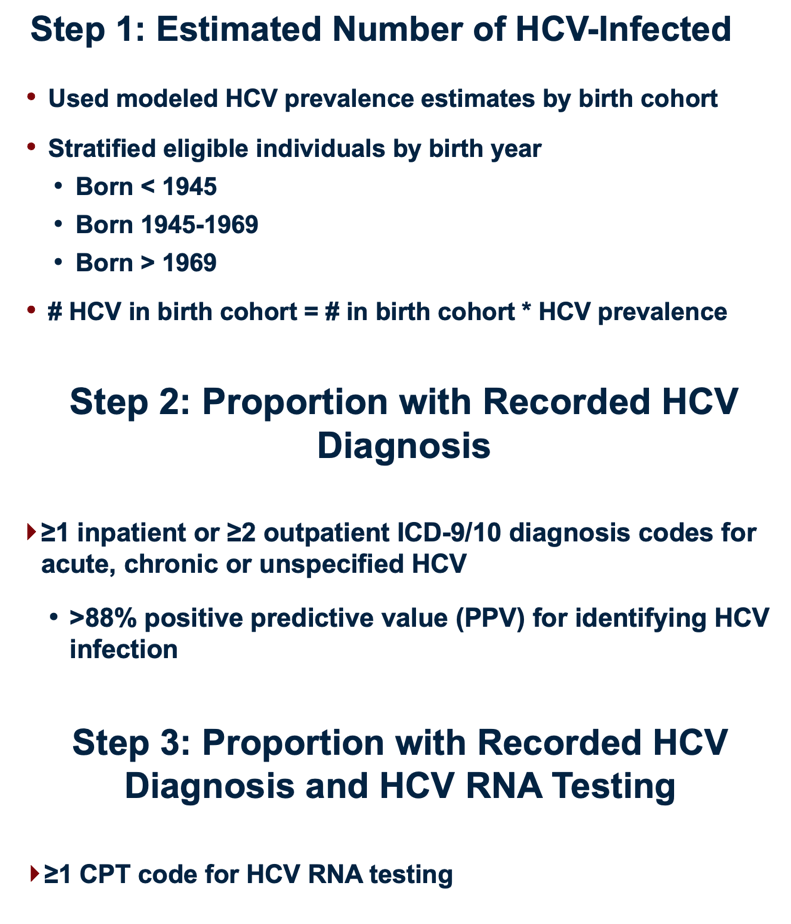
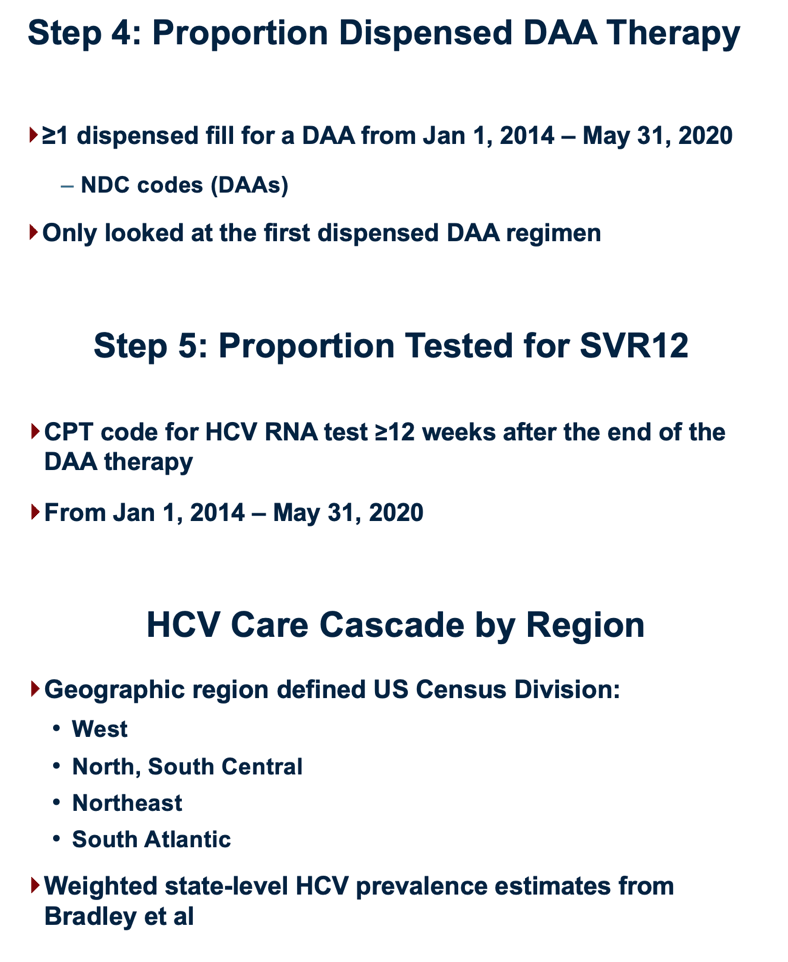
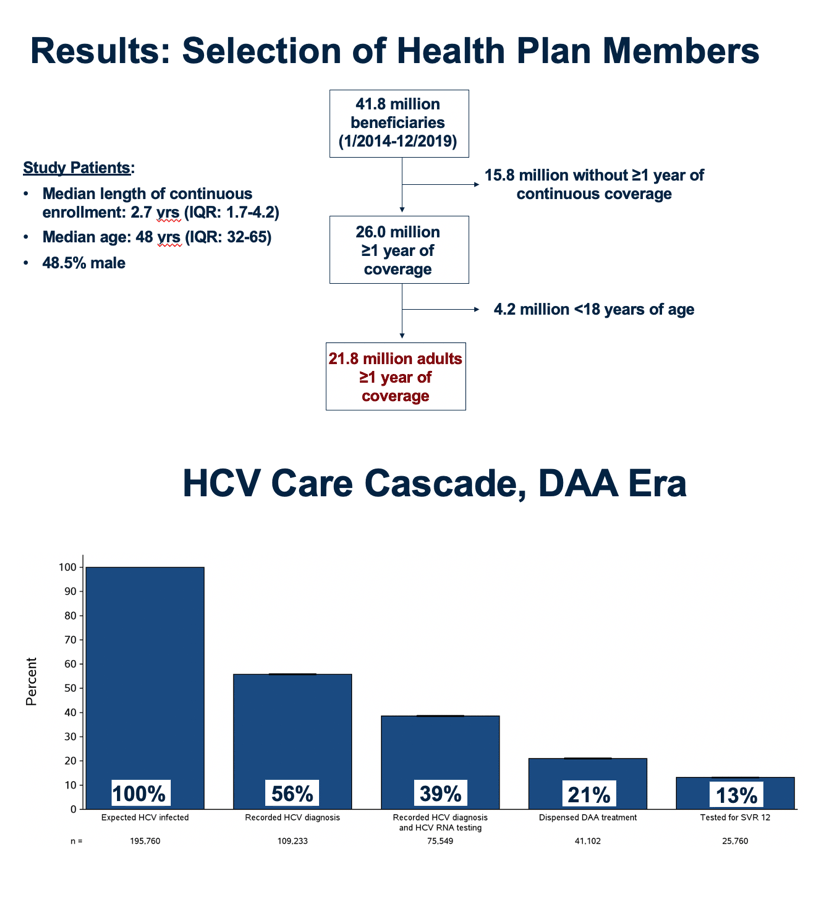
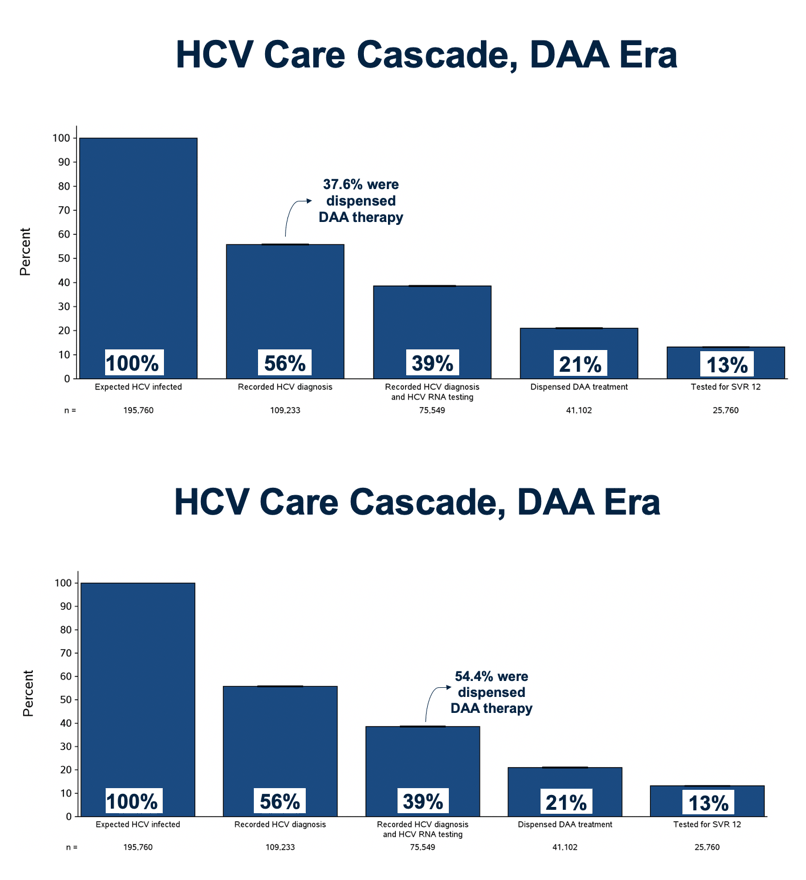
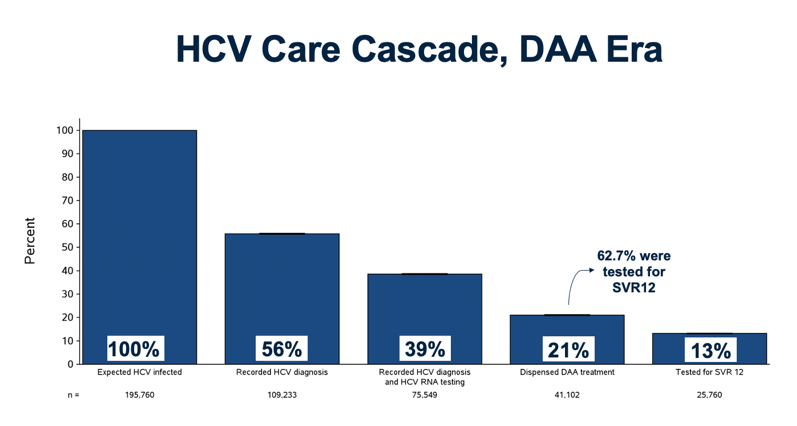
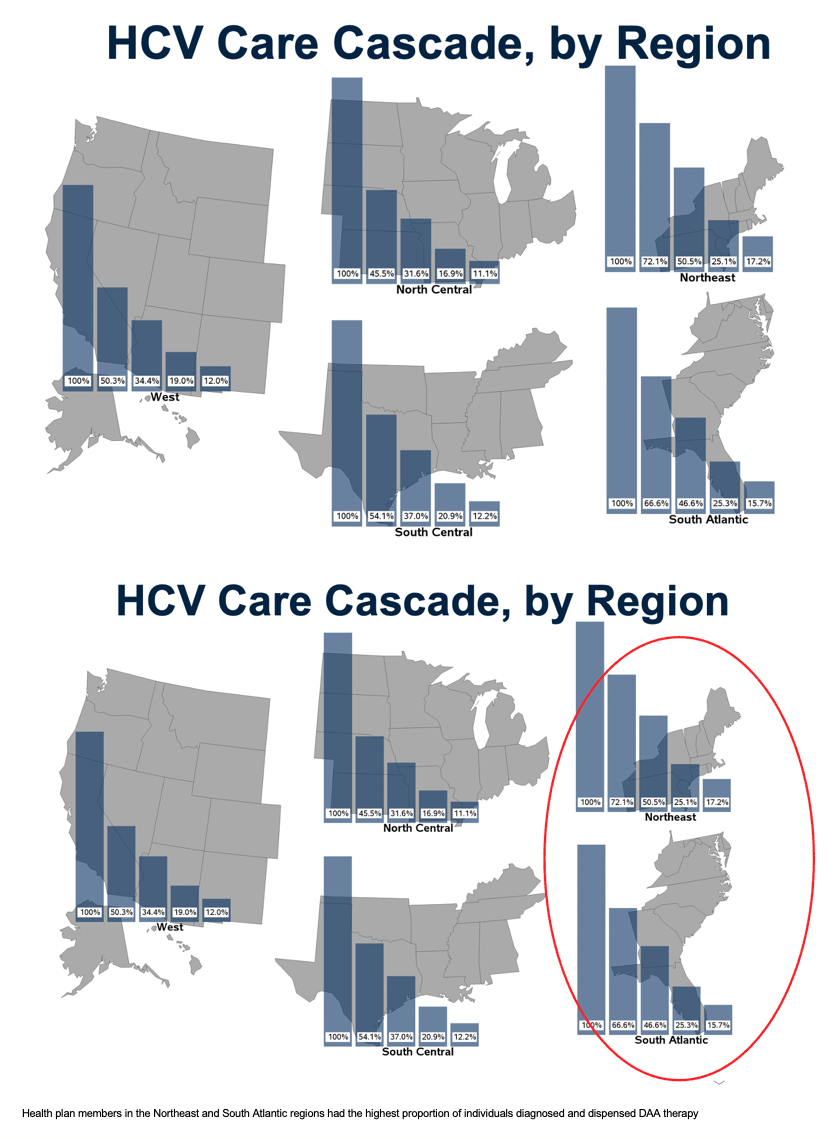
the proportions of individuals diagnosed and dispensed DAA therapy were the lowest in the north central region
with 45% of individuals diagnosed and 17% dispensed DAA therapy
Lastly, the distribution of the care cascade for each region differed significantly when compared to the combined cascade distribution of all other regions and from each other in pairwise comparisons
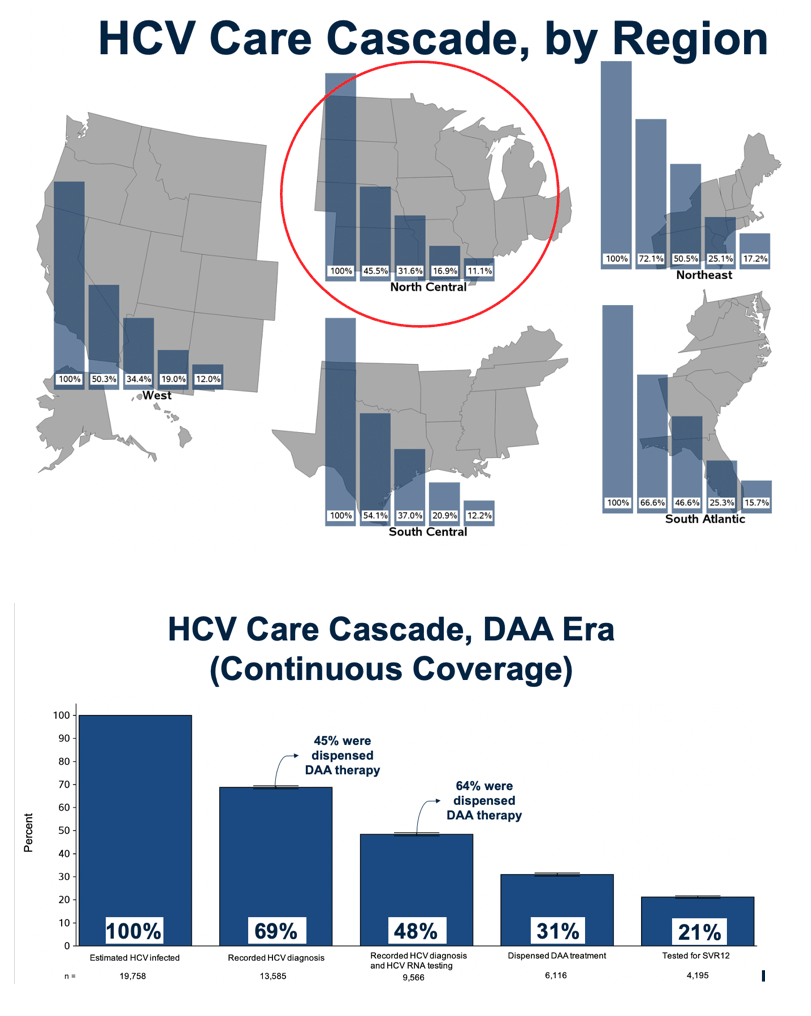
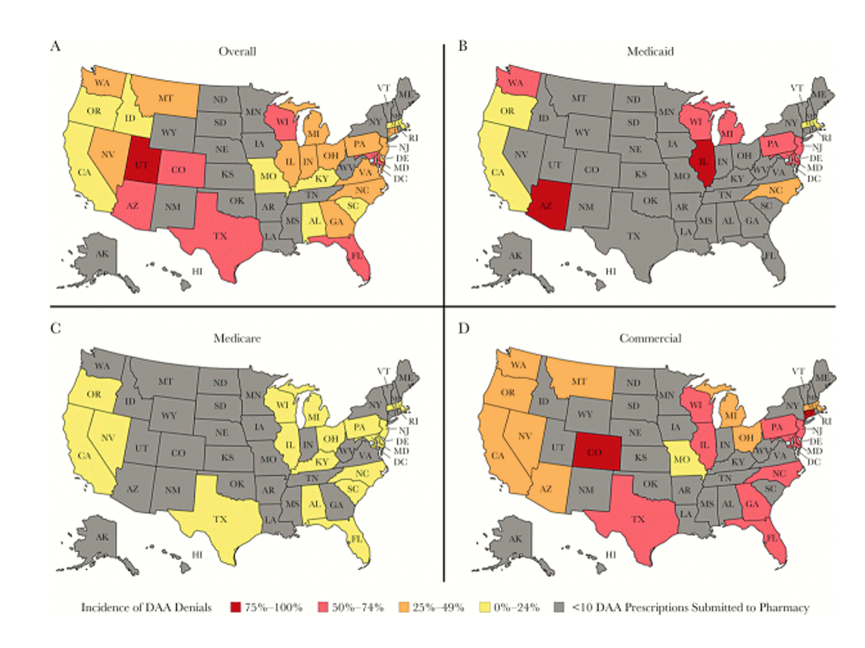
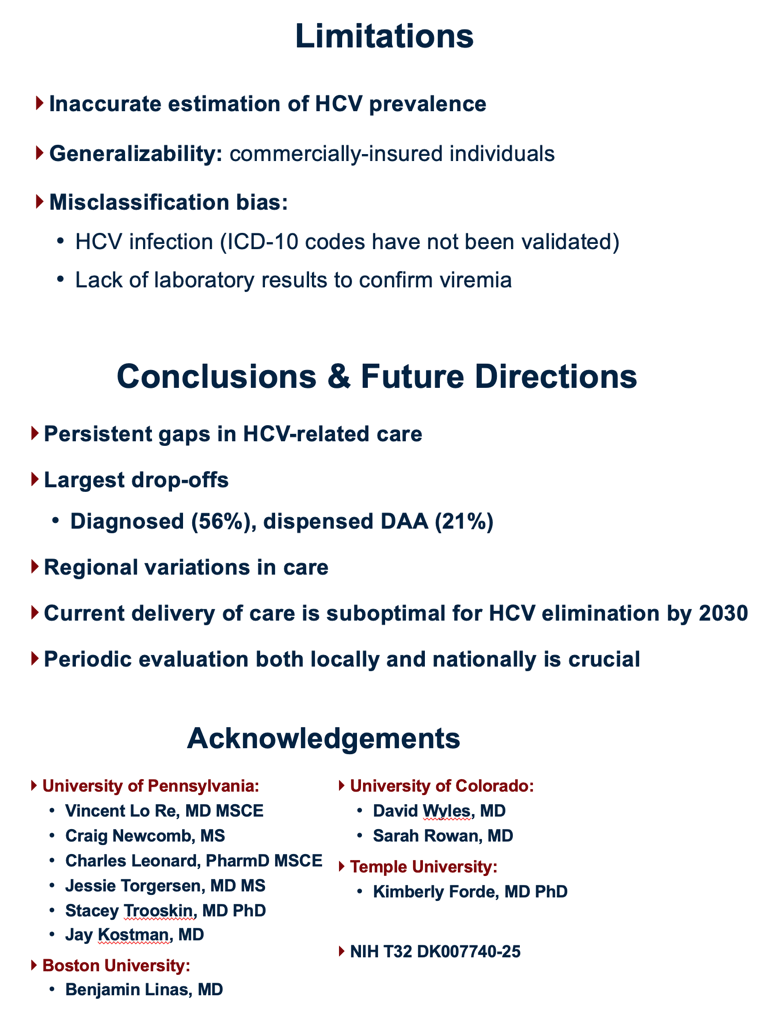
| |
| |
| |
|
|
|